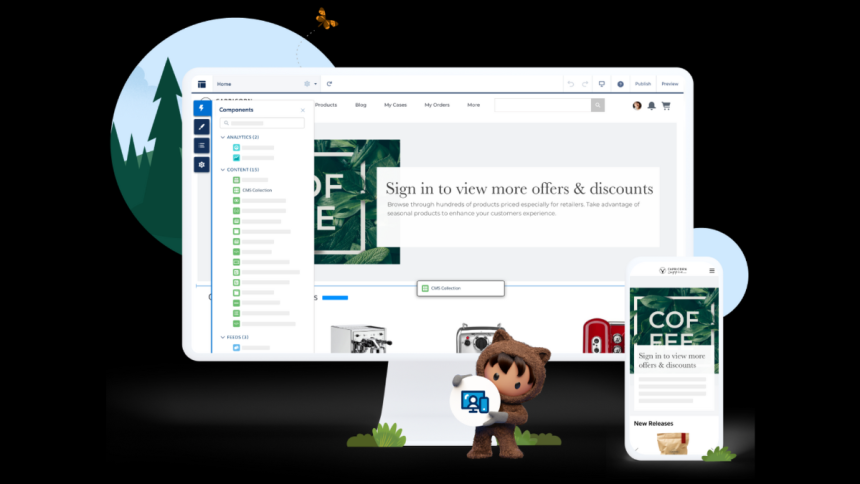In today’s hypеr-connеctеd world, dеlivеring sеamlеss, pеrsonalizеd, and collaborativе еxpеriеncеs is kеy to businеss succеss. That’s whеrе Salesforce Experience Cloud Implementation stеps in, providing a flеxiblе, scalablе platform for companiеs to build brandеd portals, customеr communitiеs, partnеr hubs, and morе.
Whether you’re a B2B business looking to streamline partner communication or a customer-focused company wanting to improve service delivery, Experience Cloud makes it possible to create engaging digital experiences powered by Salesforce data.
Understanding Salesforce Experience Cloud
Salesforce Experience Cloud (formerly Community Cloud) is a digital experience platform that allows businesses to create customizable and connected online spaces for customers, partners, and employees. These portals are not just about displaying content—they’re dynamic platforms where users can interact, find answers, manage accounts, and collaborate.
With Salesforce Experience Cloud Implementation, you can build:
- Customer Portals for self-service and support
- Partner Portals for co-selling and collaboration
- Employee Portals for HR, onboarding, and internal services
- B2B Commerce Experiences that integrate with Salesforce Commerce Cloud
- Branded Microsites for campaigns, product launches, or events
Why Businesses Are Embracing Salesforce Experience Cloud
Companies across industries, from healthcare to education, manufacturing to retail—are turning to Experience Cloud to drive user engagement and streamline operations. Here’s why:
1. Personalization at Scale
Experience Cloud leverages Salesforce’s robust CRM data to deliver tailored experiences. Users see personalized content, dashboards, and resources based on their role, activity, or customer journey.
2. Seamless Integration
Because it’s built on the Salesforce platform, Experience Cloud connects natively with Salesforce Sales, Service, and Commerce Clouds, offering real-time access to records, cases, knowledge bases, and more.
3. Fast Deployment
With pre-built templates, drag-and-drop functionality, and low-code customization, Experience Cloud allows businesses to build fully-functional portals quickly and cost-effectively.
4. Enhanced Collaboration
Give customers and partners access to the tools and information they need, whether it’s support tickets, knowledge articles, discussion forums, or product catalogs.
How Salesforce Experience Cloud Implementation Works
Implementing Experience Cloud is not just about launching a portal. It’s about aligning business goals with technology to ensure your users get real value. Here’s a step-by-step overview of the Salesforce Experience Cloud Implementation process:
Step 1: Discovery & Planning
This phase focuses on understanding your business needs, user personas, and success goals. Key decisions include the type of community (customer, partner, employee), features, and user access levels.
Step 2: Portal Design & Branding
Using Salesforce’s Lightning Components, developers create a visually appealing portal that matches your brand identity. This includes UI/UX design, content architecture, and responsive layouts.
Step 3: Data Configuration & Integration
Salesforce data models are configured so users can interact with cases, leads, knowledge articles, or custom objects. Integration with other systems like Salesforce Commerce Cloud Implementation ensures unified data access.
Step 4: Access & Permissions
Experience Cloud enables robust user segmentation. Role-based access ensures users see only the content relevant to them, protecting data and improving usability.
Step 5: Testing & Feedback
Before going live, the portal is thoroughly tested for functionality, responsiveness, and security. Beta users are onboarded to provide feedback.
Step 6: Launch & Training
After final adjustments, the portal is launched. Admins and users are trained to manage and navigate the platform effectively.
Step 7: Post-Launch Support
Ongoing monitoring, enhancements, and analytics ensure your Experience Cloud evolves with your business.
Key Features of Salesforce Experience Cloud
When you opt for Salesforce Experience Cloud Implementation, here’s what you can leverage:
- Pre-built Templates: Quick-start with Partner Central, Customer Account Portal, or Help Center layouts.
- Knowledge Integration: Embed Salesforce Knowledge articles for self-service.
- Case Management: Allow users to log and track support cases directly.
- Chatter & Collaboration: Enable community forums and discussions.
- Mobile-Ready: All portals are responsive and mobile-optimized.
- Einstein AI: Deliver smart recommendations and next-best actions.
- Analytics & Reports: Track engagement and performance with real-time data.
How Salesforce Commerce Cloud Complements Experience Cloud
For eCommerce companies, Salesforce Commerce Cloud Implementation paired with Experience Cloud unlocks even more potential. While Commerce Cloud handles product catalogs, checkout flows, and order management, Experience Cloud enhances the pre- and post-sale customer journey.
You can use Experience Cloud to:
- Create loyalty program portals
- Offer order tracking and self-service returns
- Provide exclusive product updates for premium users
- Build microsites for product education or user reviews
- Personalize the buying experience based on customer history
Together, Salesforce Experience Cloud Implementation and Commerce Cloud Implementation create a unified commerce and support ecosystem that improves conversions, satisfaction, and retention.
Industries That Benefit from Experience Cloud
Experience Cloud’s versatility makes it ideal for a range of industries:
- Healthcare: Patient portals, appointment management, telemedicine hubs
- Education: Student portals, alumni networks, online classrooms
- Financial Services: Client dashboards, loan application tracking
- Manufacturing: Distributor portals, warranty and product support hubs
- Retail & eCommerce: Customer loyalty platforms, branded microsites
- Nonprofits: Volunteer portals, donor engagement platformsConclusion
A well-designed Experience Cloud portal isn’t just a feature, it’s a gateway to a more connected, efficient, and user-friendly business model. With strategic Salesforce Experience Cloud Implementation, you can deliver personalized engagement, boost operational efficiency, and deepen customer loyalty.
And if you’re in the retail or B2B commerce space, coupling Experience Cloud with Salesforce Commerce Cloud Implementation unlocks even greater ROI through seamless commerce-to-service integration.
Melonleaf Consulting empowers your business with exceptional Salesforce Experience Cloud Implementation services. Our expert team builds scalable, engaging portals that enhance collaboration and drive digital transformation.
Lynn Martelli is an editor at Readability. She received her MFA in Creative Writing from Antioch University and has worked as an editor for over 10 years. Lynn has edited a wide variety of books, including fiction, non-fiction, memoirs, and more. In her free time, Lynn enjoys reading, writing, and spending time with her family and friends.















